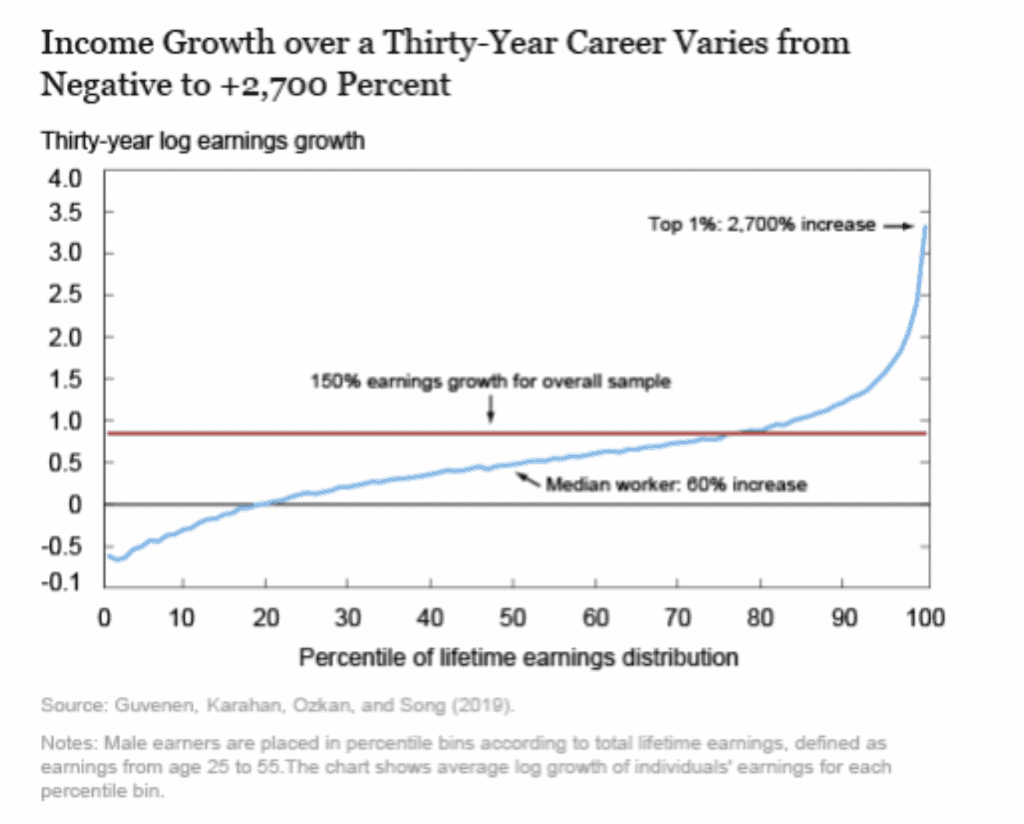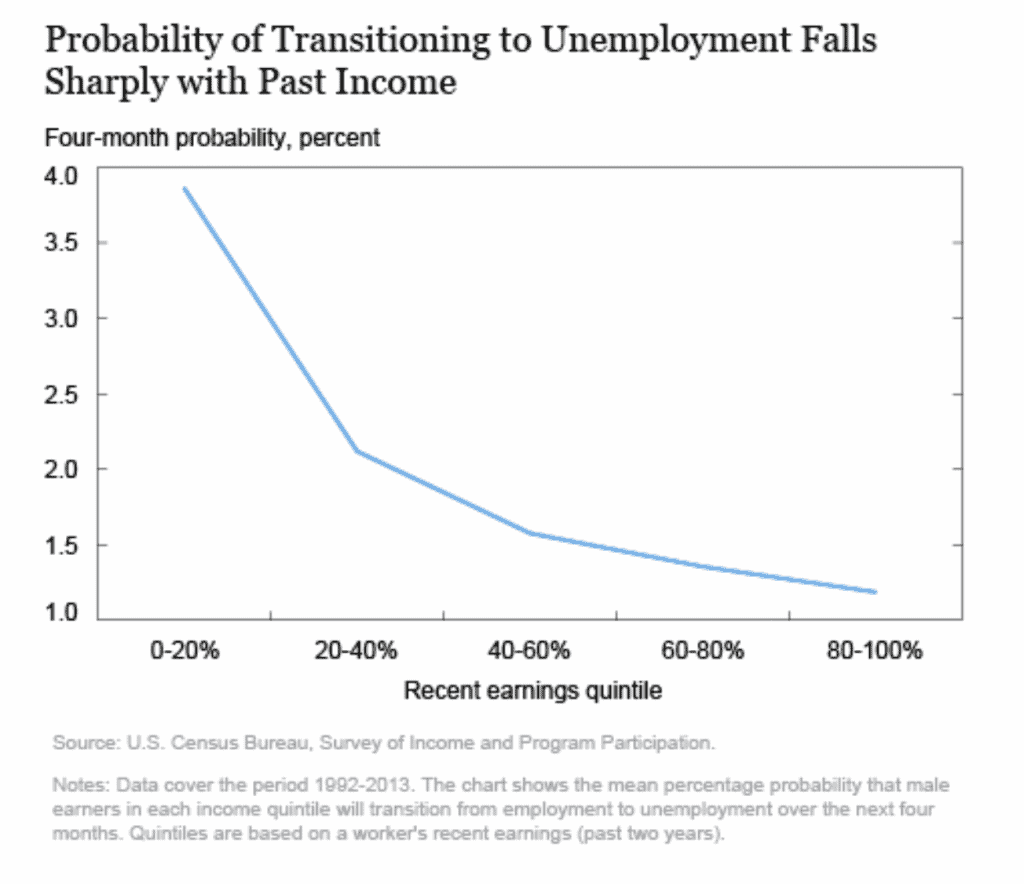In the third installment of our examination of heterogeneity and its effects on the economy, we again turn to the Federal Reserve Bank of New York to take a look at how heterogeneity affects movement to better jobs.
Previous research has shown climbing the “job ladder”—in which workers obtain large pay increases when they switch to better jobs—is important for wage growth, so we use Fed research to investigate how job ladders differ across worker profiles.
The Fed used data from W-2 forms and self-employment reporting to assess how earnings growth differs among men. (Note: a similar study of women is in the works.)
Specifically, men were grouped into percentiles of total lifetime income and average earnings at age 25 were compared to those at 55. The chart below shows that the annual earnings of the median worker increased by about 60 percent. By contrast, workers below the 20th percentile actually experience a decline in earnings, while those in the top one percent experience a twenty-seven-fold increase.

To move to better jobs workers first need to be able to hold on to the ones they have. One possible explanation for the low earnings growth of low-income individuals is that they do not have access to stable jobs. To investigate this hypothesis, we use data from the Survey of Income and Program Participation (SIPP) to rank men by their recent earnings over the prior two years and group then into five categories. The chart below shows that low-income earners indeed face a greater risk of losing their jobs, and by a large margin. Individuals in the bottom quintile are more than three times as likely to become unemployed as those in the top quintile.

The Fed next turned to job-finding rates. Skill loss during unemployment and the stigma employers attach to long-term unemployment can create long-lasting effects on the worker’s subsequent employment and earnings. To check this possibility, the analysis proceeded similarly to our analysis of job stability and computed from SIPP data the job-finding rates of the unemployed in each group (specifically, the fraction of unemployed who have a job after four months). Nearly 80 percent of the unemployed in the top group are employed again after four months, compared to 31 percent of the lowest earners. Taken together, the two facts imply that low-income earners lose their jobs more frequently and go through longer unemployment spells, underscoring a less stable job ladder.
Next, assuming high wage earners get more outside offers when employed, they can climb to better jobs faster and enjoy higher wages. Such outside offers can sometimes also lead the employer to raise wages in order to keep the worker. The Fed looked at the Survey of Consumer Expectations to calculate the number of contacts workers receive about outside options. The left panel of the chart below shows that high-income individuals are contacted and asked about alternative opportunities more often than low-income individuals with workers in the top five percent of earners getting more than twice the contacts of those between the 80th and 95th percentiles.
The number of contacts high earners make don’t translate into job-to-job switches. In fact, top income earners are much less likely to switch jobs, perhaps as a result of the earner already having a high-paying job.
Given that those with low incomes have a higher risk of job loss, take longer to find jobs, and have a much lower likelihood of being contacted by better employers, it is no surprise that huge differences in earnings growth arise between low- and high-income workers over a thirty-year period.
One interpretation of these findings is that shocks that occur early in a career, such as unemployment, put workers on a trajectory with lower expected wage growth. An alternative interpretation is that while individuals differ in their human capital when they enter the labor market, these differences manifest themselves much later in life through more stable jobs, frequent job-switching, and eventually higher wages.
SOURCE
https://libertystreeteconomics.newyorkfed.org/2019/10/job-ladders-and-careers.html
